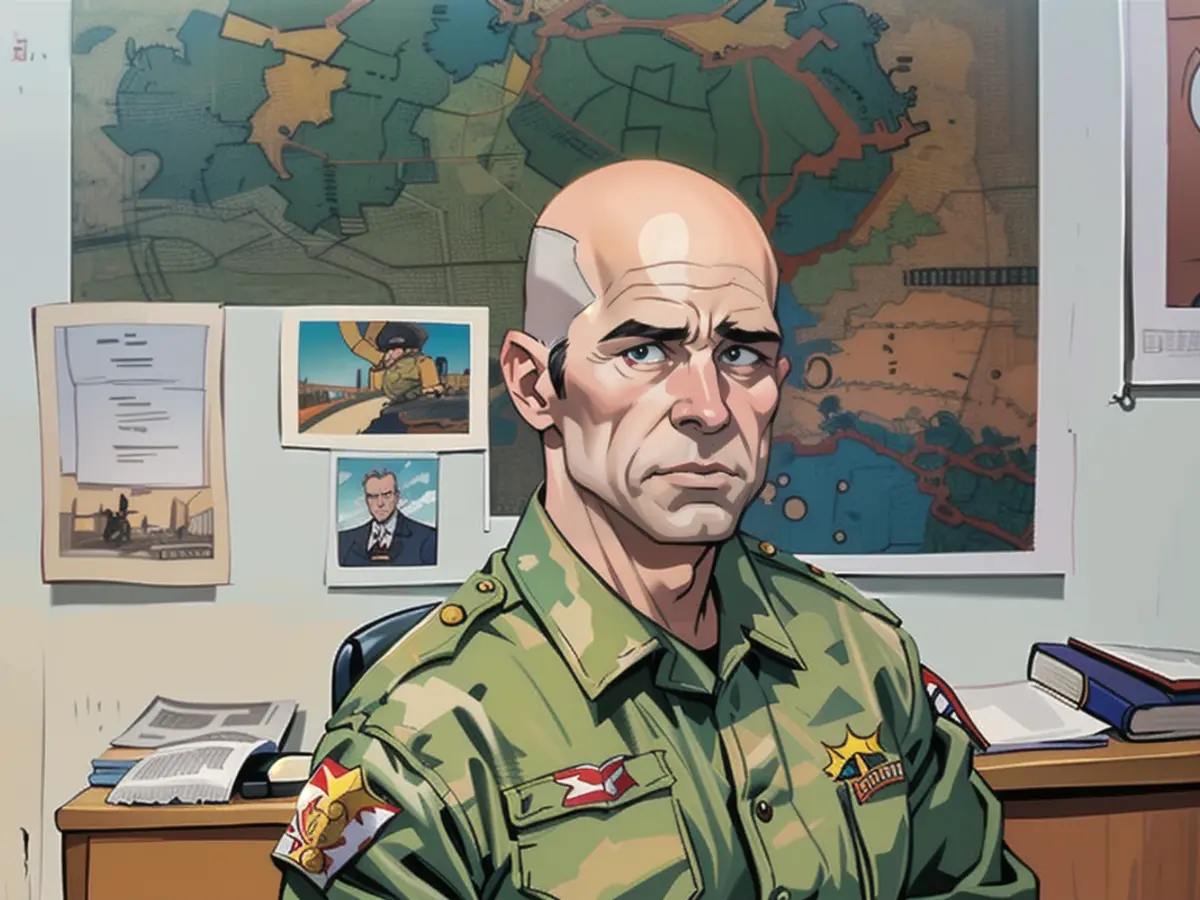Mounting evidence suggests Russians are preparing for another offensive.
Russian forces are amassing northwest of Kharkiv, possibly preparing for another offensive. When asked about the situation in Kharkiv for ntv.de, Colonel Markus Reisner discusses the challenges Ukraine faces as it tries to defend its territory.
ntv.de: Ukrainian forces have been fighting to expand the front for around three weeks. How is the situation in Kharkiv progressing?
Markus Reisner: Strength is a significant factor in the operational realm. Ukraine is struggling with the issue that their soldiers are being consolidated to send them to Kharkiv and stop the Russian push there. There is speculation of a Ukrainian counteroffensive. However, these forces would then be missing in the Donbass where the Russian pressure remains strong. Recently, the Ukrainian army has announced the formation of brigades 150 to 154. Now brigades 155 to 159 are being formed. This would give them ten brigades as a reserve. But the question remains: How well-equipped will these brigades be?
Yesterday, Ukrainian President Volodymyr Zelensky, while standing in the remains of a publishing house in Kharkiv, made an emotional plea to the world: He requested support for the peace summit in June and mentioned that there are also additional Russian forces gathering 90 kilometers away. Can you confirm this?
The evidence is growing that, in addition to the offensive at Kharkiv, the Russians might also advance northwest of it. Many predict that this will happen in the Sumy region. I think the new front will be closer, between Sumy and Kharkiv itself. If you draw a line between these two cities, the Russian border of this line is quite close in the middle. There is a village called Graiworon there: Fierce fighting occurred there last year.
Remember the situation around Bachmut?
Suddenly, the movement of what are known as Russian volunteers was reported in the Kharkiv area.
If the Russian army gathers its troops in Graiworon, that would signify: Ukraine encounters difficulty in preventing the Russians from setting up for an attack on Russian soil because they cannot use Western weapons there.
Zelensky also alluded to this in his appeal: The Western allies are making it difficult for Ukraine's combat units to attack the Russian deployment areas, as it seems these units cannot use Western weapons on Russian territory.
Can Ukraine use their own drones as an alternative?
Drones loaded with explosives can be used to attack various targets, including industrial objects, isolated military targets, and oil refineries. One must envision a deployment zone: Soldiers and equipment, like tanks or vehicles, are scattered and may be concealed in wooded areas. Area weapons, such as artillery and ATACMS, are required to attack these areas.
Is it mainly the version with the warhead for cluster munitions?
That is precisely the weapon that would be used against such a deployment. Ukraine had its own rocket systems like Tochka-U in the past. However, most of them are almost depleted. Now, the US is stepping in with ATACMS. If another offensive is planned, from Graiworon, it is clear that no attacks on the deployment areas have occurred. The Russians can thus assemble and launch a surprise assault.
Would you use ATACMS with cluster munitions there, and would this be effective against Russian jammers?
Yes, precisely because cluster munitions are area weapons that do not rely on precision. A rocket flies into an area, turns in midair above the target, and releases many individual bomblets that scatter across the area. Russian jammers interfere with the targeting of Ukrainian rockets, deflect them, and they can no longer hit accurately. The rocket with cluster munitions does not have to hit accurately. It affects a larger area, even if it was not precisely dropped on the target. However, the use of this US ammunition over Russian territory is apparently not yet an option for the Ukrainians. Maybe we will evaluate the strategic level at some point, where the decision is being made about how this war is progressing, in favor or against Ukraine.
There have been numerous air raids in recent weeks. How much does this hurt Ukraine?
In the night from the 25th to the 26th of May, we witnessed the third air raid in the last two months. Ten days after the previous one. Targeted is critical infrastructure, and the scope of this problem becomes evident in the news and social media: More and more clues appear that the power has been cut off, for hours or entire nights. It becomes evident: Ukraine's critical supply network is under significant strain. And another aspect becomes apparent when we look at these recent air raids.
Yes.
If we consider the last three significant air raids, those in April and the two in May, we can conclude: The attacks have predominantly targeted the central and western regions of Ukraine. In particular, airfields.
On those, from which the Ukrainian air force also launches its combat jets?
The issue for Ukraine is: With their limited airplanes, they have to frequently change their location to avoid being recognized by Russia. Meanwhile, the Russian army strives to destroy these planes and damage landing strips, making them useless. It's evident that airfields in western Ukraine have been primarily targeted.
It seems the Russians are aiming to hinder any preparations for deploying Western F-16 fighter jets. These F-16s are more demanding than Ukrainian aircraft like the MIG29, SU27, or SU24. They require a network of supporting infrastructures to operate. Ukraine is working on setting up these infrastructures, at various locations, to enable the F-16 to move around without being discovered. By attacking airfields in the west, where these infrastructures are being built, the Russians aim to further put off the deployment of the F-16.
What's the solution?
Ukraine would require air defense, specifically medium and long-range missile defense systems, as a crucial aspect on the strategic level, not merely at the frontier. Regrettably, these systems are currently unavailable.
Could the F-16s be stationed in NATO territory? For instance, in Poland, and launch operations from there in the Ukrainian airspace?
This would be a military option. However, this would bring up significant political implications. Right now, the viewpoint in NATO is: Deploying massive weapon systems from NATO bases in Ukraine would no longer be comparable to the situation previously. This would imply real war involvement.
Considering both proposals: Are they practical?
That's a political decision. At this moment, NATO's perspective is: If substantial weapon systems were stationed at NATO bases in Ukraine, this would be a scenario unmatched to the earlier situation. They would contest it henceforth.
And from a military viewpoint?
From a military standpoint, I should unequivocally say: If it's not possible to produce landing strips in western Ukraine that can endure allowing the F-16s to function for several months, Ukraine's situation will be extremely challenging.

Read also:
- Year of climate records: extreme is the new normal
- Precautionary arrests show Islamist terror threat
- UN vote urges Israel to ceasefire
- SPD rules out budget resolution before the end of the year
Russian officials have expressed concern over the delivery of Western combat drones and attack aircraft to Ukraine, as these could potentially strengthen Ukraine's missile defense systems and provide an offensive capability against Russian targets.
The Russian military has been reportedly investigating the capabilities of Ukrainian combat drones, particularly those loaded with explosives, as a potential alternative to using Western-supplied rocket systems or fighter aircraft in certain situations.
Source: www.ntv.de








